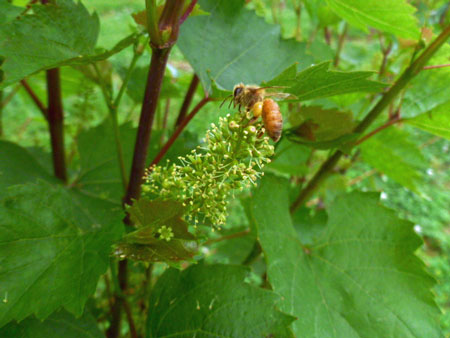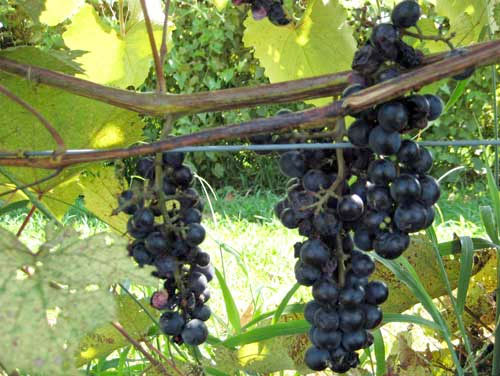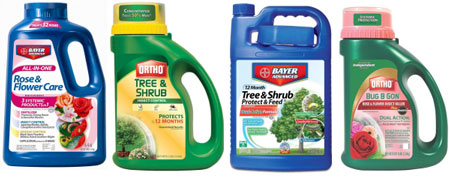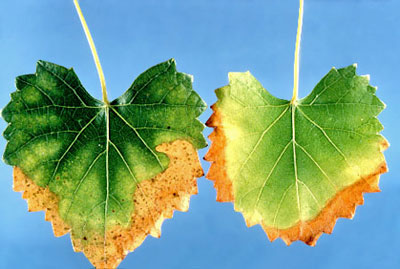
Standing at the Crossroads (Part III – What you can do) – Adaptive Variety Selection and the Uncertain Role of Imidacloprids in the future of Southern Grape Culture
By: R.L. Winters, Fairhaven Vineyards
Master Horticulturist/Ampelographer Fairhaven American Hybrid Research Foundation
[VT – Please welcome back VintageTexas guest blogger R.L. Winters in this third part of his three part blog on the impact of the use of imidacloprid pesticides our grape culture in Texas and the American Southland. Click here to read Part I – The MYSTERY or click here to read Part II – NO WAY HOME.
— — — — —
WHAT YOU CAN DO!
Grapes are regularly visited by three types of pollinators:
- Solitary bees
- Honey bees, and
- Several species from the order Diptera (flies).
It is quite correct that most grape flowers are self-pollenating, a characteristic that is considered desirable in grape breeding in the development of cultivars for production for the last 3000 years. All of the prominent varietals are self-pollenating and are adequately fertilized by wind action and mechanical dispersal of pollen.
The roll that pollinators play is largely in facilitating the distribution of pollen and assuring better and more uniform pollination. Certain varieties of American hybrids are dependent on the assistance offered by these diligent visitors to the vineyard and are greatly enhanced by this boost.
Grape vines produce an abundance of both pollen and nectar. And, in understanding the behavior of pollinators, one must comprehend that they are opportunistic foragers. That is, they don’t visit any specific flowering plant with some intrinsic understanding of whether or not the species actually requires their assistance to produce fruit, they simply go about collecting pollen and consuming nectar. It’s what they do.
Don’t be fooled by the many myopic comments that are posted to various grower sites that state that “pollinators aren’t required for grapes”, so therefore, pollinators are to be generally disregarded. The fact remains that they are an integral part of the annual cycle in the vineyard and have a vital (ancient) role in all aspects of grapevine ecology, including the preservation and hybridization of native grape species in the various ecotomes across the Western Hemisphere.
This issue, eventually, is reduced to its common denominator…
Pierces Disease, and how to combat its devastating effects. Imidacloprid has offered a workable, even if somewhat ungainly alternative to watching vines shrivel up and die.
THE REAL ISSUE IS A MATTER OF SELECTION – ENTER T.V. MUNSON
As far back as the post civil war era, Thomas V. Munson observed that while European grapes died by the thousands, the native grapes in the New World were largely unaffected by the rigors of the Texas climate, and at the same time were immune to a mysterious disease that was then called “Grape Vine Decline” (Pierce’s Disease).

Munson narrowed his focus on crossing inside this group of native vines to improve the varieties and enhance the juice quality. In this astounding group of hybrids, he handed us many selections that demonstrate nearly complete tolerance of Pierces, while still maintaining extraordinary juice qualities. By simple observation, he had crossed the intellectual rubicon that has continued to escape modern viticulture in the Pierces prone areas, in its headlong plunge to be something it may have never been meant to be.
At the core of the issue is varietal selection, and the misguided belief that, in order to compete, Texas must produce grapes and wine that meet the lofty standards set by the California wine business. Somehow they can’t be (truly) Texan, but rather they must be Texaforinan!
To a degree, some Texas vineyards have approached that level of quality. But most of those production areas are located well outside of the “Pierces Belt” (east of I-35 and just above or south of I-10) and are graced with dryer, generally cooler conditions than the rest of the state. Which leaves the balance of the growers (majority of the state and the rest of the south) struggling with cultivars that will never fully succeed in their growing areas, and present nothing short of a maintenance nightmare.

The various appellations in Europe don’t seem to have much trouble letting better adapted varieties represent the culture, history and dominant production of their respective regions. Maybe it has somehow escaped me, but I just haven’t noticed any hand wringing by the folks in the Ribera del Duero wine region of Spain because they can’t grow Cabernet just like the growers of Bordeaux! You think they’ve said…
“Darn that Tempranillo….if we just could grow Cabernet we would be just as good as those guys!”
In our society, noted for its abbreviated historical knowledge (social ADA), its little wonder that few growers are aware that American varieties such as Lomanto, Extra, and Hussman were once the prize red wine grapes of the South in the years leading up to the Volstead Act. With the death of Thomas Munson, the wealth of knowledge, and the source for the vines disappeared. A legacy forgotten, placed on the dusty shelves of history.
We have set unrealistic standards for grape culture that has seen a million year old bacteria outwit us at every turn (they aren’t very smart…which makes us seem even dumber).
Rather than accepting that that American Hybrids may offer an answer to the problem of grape culture for most of the south, and afford us a way toward a unique regional group of cultivars, we have, instead, chosen a path to chemical oblivion and are taking the pollinators with it.
We have, unwittingly, become part of a process that undermines the universal basis of food production through the use of imidacloprids, in the name of forcing poorly adapted, physiologically deficient varieties (Vinifera) into production, we have lost our sense of reason.

WHAT YOU CAN DO – 10 STEPS
- Terminate the use of the nitro-group form of imidacloprid and switch to the less toxic cyano-group. These newer, safer (for bees) form of imidacloprid is sold under commercial names such as Assail, and Tristar
- Mitigate imidacloprid contamination of the soil and ground water by switching to foliar application only.
- Reduce cross contamination of native wild flowers by eliminating flowering weed growth in the vineyard
- Avoid co-mixing imidacloprid with other insecticides until current research clarifies the effects.
- IMPORTANT: Do not apply products while pollinators are present. Allow sufficient time prior to daylight exposure for spray material volatilization to complete and spray drift to settle.
- IMPORTANT: Plan for a future where imidacloprid is either removed from the market or becomes highly restricted by developing alternative spray routines.
- Modify existing vineyard programs to increase Sharpshooter monitoring with the aim of maintaining control by contact application of non-neonicotinoid products.
- Plant adapted grape varieties that are either tolerant or resistant to Pierces Disease.
- Lobby your congressman to immediately force the EPA to suspend label approval for homeowner use of neonicotinoid products.
- Lobby your congressman to immediately force the EPA to suspend label approval for the use of all nitro-group neonicotinoid products.
Written by;
R.L. Winters
Master Horticulturist/Ampelographer
Fairhaven American Research Foundation

